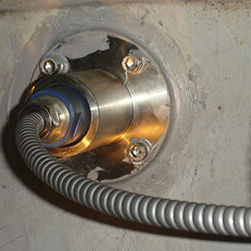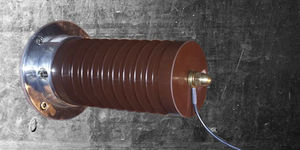
- Company
- Products
- Catalogs
- News & Trends
- Exhibitions
Current monitoring unit for wind turbine
Add to favorites
Compare this product
Characteristics
- Type
- current
- Applications
- for wind turbine
Description
Current operating practices place severe thermal and mechanical stresses on the rotors and stators of large pump storage hydro and turbo generators.
These practices involve multiple daily run-ups and run-downs of the machines, which can lead to premature ageing and cycle-related deterioration of the stator windings.
Pump storage, hydro-generator and nuclear turbo-generator designs are characterized by extremely long end winding assemblies and complex spacer systems that are subject to high mechanical and electrical stresses and are predominantly excited by electromagnetic forces due to the interaction of a magnetic field and an electrical current.
Extending the service life of the generators and increasing their availability can only be achieved by continuous monitoring of the end winding structures and stator bars to detect any foreseeable deterioration of structural integrity.
Loosening of endwinding support
Wear of insulation
Rupture of coil
Fatigue cracking of conductors
Rotor unbalance
Alternating air-gap
Depending on the generator size, between 6 to 9 sensors installed uniformly around the endwinding in the radial direction on each side. Bump test is recommended to identify the best sensors location.
MPS: Vibration amplitude @ 2X of the network frequency
CMS: Trending of vibration amplitude: broadband, 1X and 2X of the network frequency
Gearmills millsdrive
Turbogenerators
Hydrogenerators
Fiberoptic Acceleration Sensor
Catalogs
No catalogs are available for this product.
See all of MC-monitoring SA‘s catalogsRelated Searches
- Measurement monitoring device
- Real-time monitoring device
- Digital monitoring device
- Condition monitoring device
- Process monitoring device
- Online monitoring device
- Ethernet monitoring device
- Machine monitoring device
- Data acquisition monitoring device
- Modbus monitoring device
- Modular monitoring device
- Smart monitoring device
- Robust monitoring device
- Monitoring unit
- Bearing monitoring device
- Machine protection monitoring device
- Multi-channel monitoring device
- Machine condition monitoring device
- Rotary machine monitoring device
- Turbine monitoring system
*Prices are pre-tax. They exclude delivery charges and customs duties and do not include additional charges for installation or activation options. Prices are indicative only and may vary by country, with changes to the cost of raw materials and exchange rates.








